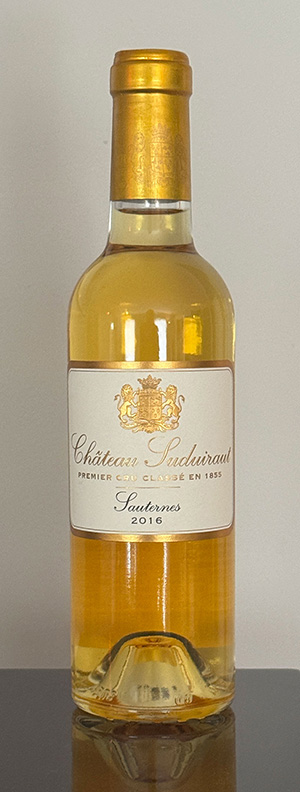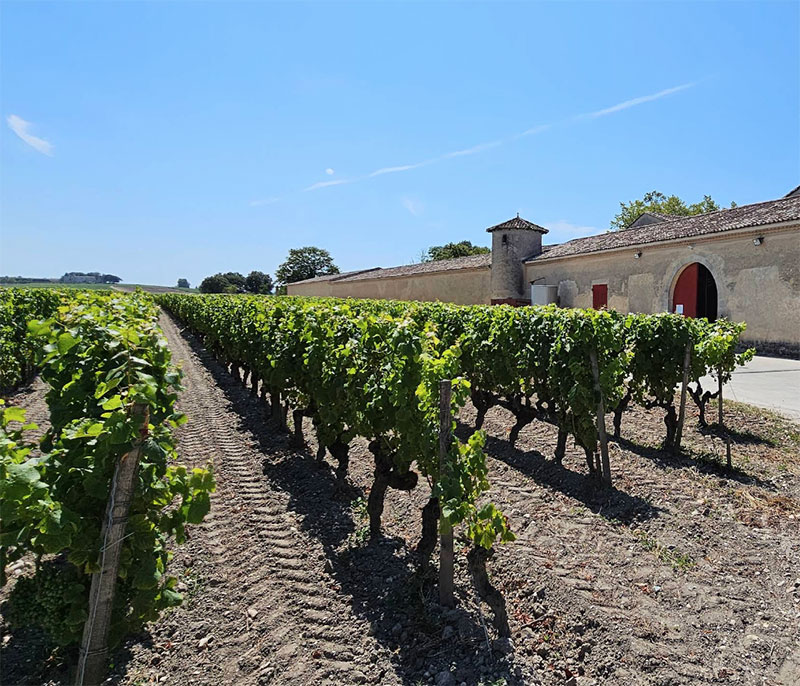
Chateau Suduiraut Sauternes
Chateau Suduiraut Sauternes hails from the famous French appellation that is home to some of the greatest sweet wines in the world, and to which it is largely dedicated. It lies within the Graves district of the Bordeaux region.
Sauternes is made primarily of Sémillon, but smaller amounts of Sauvignon Blanc and Muscadelle are often included. The unique characteristic of Sauternes is that in years with just the right conditions, including cool, foggy mornings and dry, sunny afternoons, the grapes are plagued with Botrytis Cinerea, or Noble Rot. This beneficial mold causes the grapes to shrivel, driving out water and leaving the fruit rich and loaded with sugar. Winemakers must have a clear understanding of this phenomenon, as only the grapes that have been perfectly concentrated by the Botrytis will be picked, one by one. It is very much a risky, hit-or-miss proposition, subject to many variables of weather and harvest. Because of this, Sauternes’ are not made every year and are always expensive.



Although the exact origin of the estate is lost to history, it took the name of Suduiraut in 1580 on the marriage of Nicole d’Allard to Léonard de Suduiraut. The château was plundered and burned down during the Fronde insurrection, then rebuilt in the XVII century. It was re-named Cru du Roy in the late 18th century on being taken over by a nephew of the Suduiraut family, Jean Joseph Duroy, Baron of Noaillan. The family home then acquired a cartouche featuring the Suduiraut and Duroy coats of arms, which was to give rise to the escutcheon used by Château Suduiraut today. The property was planted with magnificent formal gardens, designed by Le Nôtre, King Louis XIV’s renowned gardener.
An internal family bequest in 1804, followed by land consolidation around 1815, led to the modern estate being definitively named Château Suduiraut. On 18 April 1855 the estate was classed as a Premier Cru during the official wine classification program of the Gironde’s sweet whites. The estate lies in Preignac in Sauternes, immediately adjacent to Château d’Yquem*—a detail that has long framed perceptions of its terroir and potential.

After the classification, Suduiraut enjoyed a decorated run: a ministerial Gold Medal in 1867, First Prize of the General Council of the Gironde in 1887, and a Gold Medal at the Podensac meeting in 1890. Importantly, owner-engineer Émile Petit de Forest modernized the cellars in 1892–98 and reconstituted vineyards with American rootstocks to combat phylloxera— an innovative practice at the time.
For the next hundred years, quality was uneven relative to the region’s very top estates, a period often described as “coasting.” However, AXA Millésimes, a subsidiary of the French insurance group AXA, acquired Château Suduiraut in 1992 with the aim of preserving and perpetuating the estate’s remarkable tradition of vineyard management and winemaking, inspired by the great Suduiraut wines of the past.
Chateau Suduiraut Sauternes 2016
The estate comprises 225 acres [91 hectares] of vines on gravelly, sandy clay soil. This thin soil, which retains very little water, leads to low yields. High vine density (7,000 vines per hectare) and the high average age of vines (35 years) are important factors in the quality of the wines, along with environmentally responsible winegrowing methods, short pruning, and tillage.
This wine is a blend of 94% Sémillon and 6% Sauvignon Blanc. It was matured for 18 to 24 months in oak barrels, with some new oak used. It is a honey gold, with classic notes of the botrytis right up front, plus peach and marzipan. The palate features plenty of honey and fig, plus some lime and a bit of apricot on the the creamy finish. It is sweet, of course, but not cloying due to the excellent balance of acidity. ABV is 14%.
*Note: Any discussion of Sauternes is incomplete without mentioning the legendary Château d’Yquem, the most famous Saurternes of them all, and the only one granted the highest Premier Grand Cru Classé. It is one of the longest-lasting (and expensive) wines in the world. For example, “The 1811 Château d’Yquem is prized as one of the greatest wines in the history of Bordeaux, and one of the most supreme vintages ever produced. It was rated the ultimate ‘100 points’ by critic Robert Parker, and again 100 points by The Wine Spectator’s Per-Henric Mansson in 1999.” Although I avoid pricing here on Winervana, as a point of reference the Chateau Suduiraut Sauternes 2016 in a 375 mL half bottle sells for about $36. The d’Yquem averages seven times that at $235 for a half bottle, but the Suduiraut is nearly as well regarded.
Back to blog posts: winervana.com/blog/
